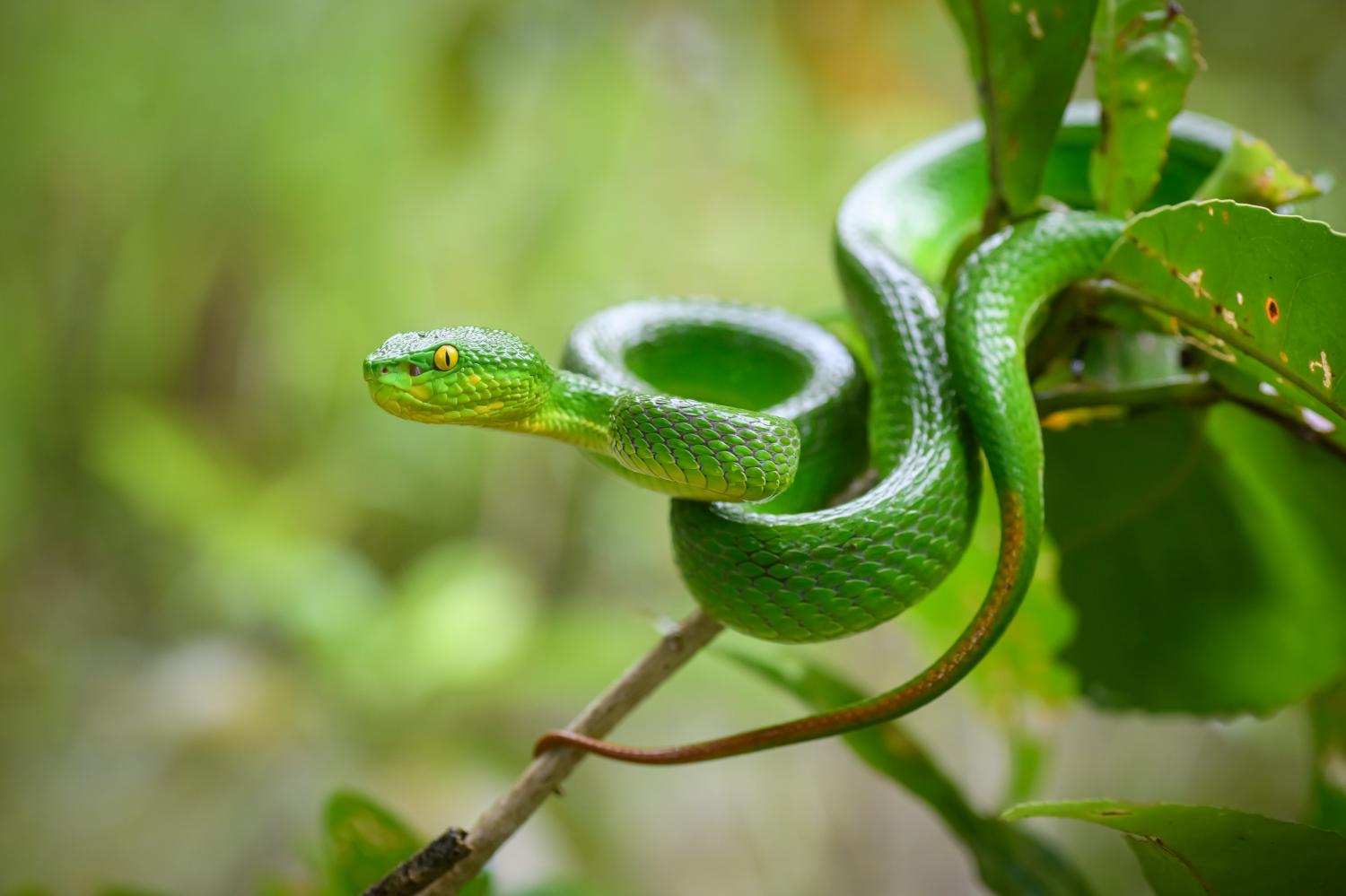
The White-lipped Pit Viper, also known as Trimeresurus albolabris, is a fascinating snake species that inhabits the forests of Southeast Asia. Its unique characteristics and behaviors make it an intriguing subject of study for herpetologists and snake enthusiasts alike. In this article, we will delve into 9 astounding facts about the White-lipped Pit Viper, shedding light on its appearance, venomous nature, habitat, and more. From its striking coloration to its deadly venom, this snake is truly a marvel of the animal kingdom. So buckle up and get ready to discover the wonders of the White-lipped Pit Viper!
Key Takeaways:
- The White-lipped Pit Viper is a venomous snake found in Southeast Asia, with a striking green body and white lip. It uses heat-sensing pits to hunt and plays a crucial role in its ecosystem by controlling small mammal and bird populations.
- This snake has a unique reproductive strategy called ovoviviparity, where the female retains fertilized eggs inside her body until they hatch. It’s an arboreal species, spending most of its time in trees, and is a skilled predator with potent venom.
The White-lipped Pit Viper is a venomous snake.
One of the most remarkable facts about the White-lipped Pit Viper is that it is a venomous snake. Found in the tropical rainforests of Southeast Asia, this snake poses a significant threat to its prey with its potent venom.
It belongs to the family of vipers.
The White-lipped Pit Viper, scientifically known as Trimeresurus albolabris, belongs to the family Viperidae. This family includes some of the most dangerous venomous snakes in the world.
The White-lipped Pit Viper has a distinct coloration.
One of the most visually striking features of the White-lipped Pit Viper is its distinct coloration. It has a bright green body with a white lip, which gives it its name. This coloration allows it to blend seamlessly into its natural environment, making it an efficient predator.
This snake is arboreal in nature.
The White-lipped Pit Viper is primarily an arboreal species, meaning it spends most of its time in trees. Its ability to hang from branches and ambush unsuspecting prey makes it a highly skilled hunter.
It uses heat-sensing pits to locate prey.
One fascinating adaptation of the White-lipped Pit Viper is its heat-sensing pits, located on each side of its head. These pits allow the snake to detect the body heat of its prey, helping it accurately strike and capture its target.
The White-lipped Pit Viper has a triangular-shaped head.
Another distinguishing feature of the White-lipped Pit Viper is its triangular-shaped head. This shape is a common characteristic of venomous snakes, and it houses the snake’s venom glands and specialized fangs.
It primarily feeds on small mammals and birds.
The White-lipped Pit Viper is an opportunistic hunter, preying on small mammals and birds. Its venom is potent enough to immobilize its prey, allowing the snake to consume its meal at its leisure.
This snake has a unique reproductive strategy.
Unlike many other snake species, the White-lipped Pit Viper exhibits a unique form of reproduction known as ovoviviparity. This means that the female retains fertilized eggs inside her body until they hatch, giving birth to live young.
It plays a vital role in the ecosystem.
The presence of the White-lipped Pit Viper is crucial for maintaining a healthy ecological balance. As a predator, it helps control populations of small mammals and birds, ensuring the stability of the ecosystem it inhabits.
Conclusion
The White-lipped Pit Viper is truly a fascinating creature with its unique characteristics and behavior. From its stunning appearance to its venomous bite, this snake captivates the attention of both researchers and snake enthusiasts. Its ability to adapt to different environments and its role in maintaining ecological balance make it an important species to study and protect.
As we continue to delve into the world of animals and explore their incredible diversity, it is important to appreciate and respect creatures like the White-lipped Pit Viper. By understanding them better, we can foster a deeper connection with nature and work towards conserving these beautiful snakes and their habitats for generations to come.
FAQs
Q: Are White-lipped Pit Vipers poisonous?
A: Yes, White-lipped Pit Vipers are venomous. Their venom is potent and can cause serious harm to humans if bitten.
Q: What do White-lipped Pit Vipers eat?
A: White-lipped Pit Vipers primarily feed on small mammals, birds, lizards, and even other snakes.
Q: Where are White-lipped Pit Vipers found?
A: White-lipped Pit Vipers are native to Southeast Asia, including countries like Thailand, Malaysia, and Indonesia.
Q: Are White-lipped Pit Vipers aggressive towards humans?
A: White-lipped Pit Vipers are generally not aggressive towards humans unless they feel threatened. They prefer to retreat and hide rather than confront humans.
Q: How do White-lipped Pit Vipers reproduce?
A: White-lipped Pit Vipers are ovoviviparous, which means that the females give birth to live young instead of laying eggs.
Was this page helpful?
Our commitment to delivering trustworthy and engaging content is at the heart of what we do. Each fact on our site is contributed by real users like you, bringing a wealth of diverse insights and information. To ensure the highest standards of accuracy and reliability, our dedicated editors meticulously review each submission. This process guarantees that the facts we share are not only fascinating but also credible. Trust in our commitment to quality and authenticity as you explore and learn with us.
